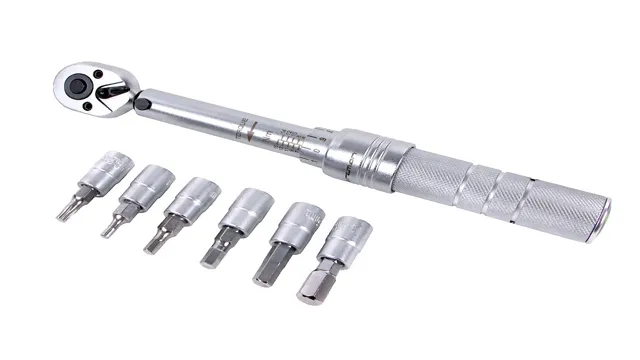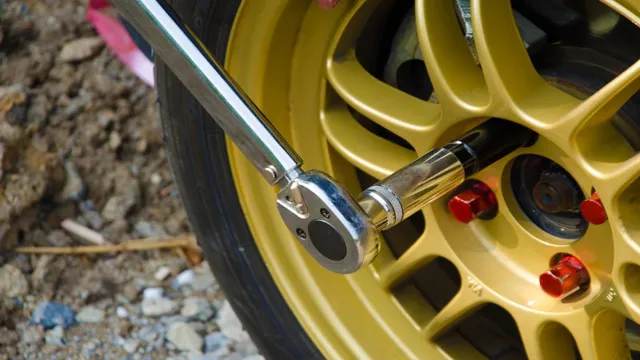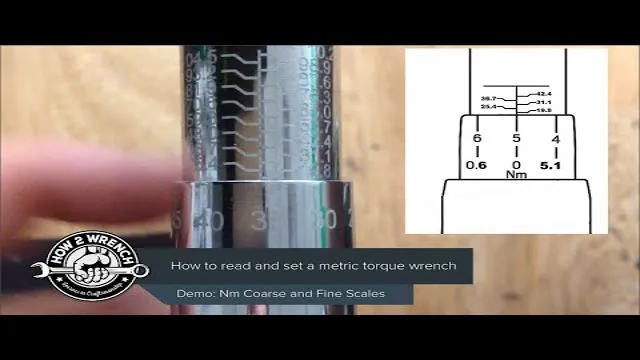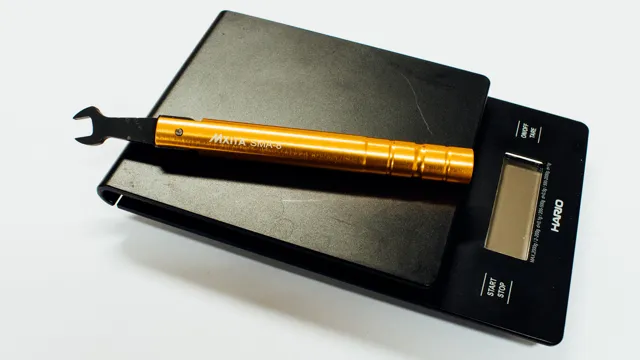Do I Need a Torque Wrench to Change a Tire? Find Out Why It’s Important.
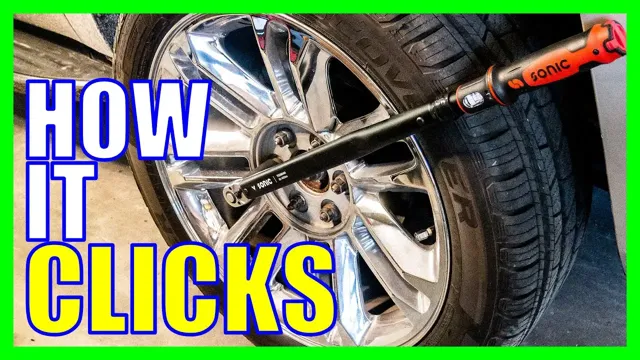
Have you ever changed a tire before? It may seem like a simple task, but there are a few tools you’ll need to get the job done right. One of the most common questions people ask when changing a tire is whether or not they need a torque wrench. A torque wrench is a tool used to tighten bolts to a specific level of tension or torque.
It’s a common tool used in automotive repair and maintenance. But is it necessary to have one when changing a tire? Let’s take a closer look.
Understanding Torque Wrenches
Do you need a torque wrench to change a tire? Well, it depends on how particular you want to be about the tightness of your lug nuts. A torque wrench is a tool used to measure the amount of force applied to a bolt, such as those holding your tire in place. Over-tightening can cause damage to your wheel studs, while under-tightening can result in the wheel coming loose while driving.
Using a torque wrench will ensure that you apply the right amount of force to each lug nut, reducing the risk of accidents and damage. However, if you are confident in your ability to judge tightness by hand or are just changing a tire in an emergency situation, a torque wrench may not be necessary. But for peace of mind and safety, using one is highly recommended.
So, to answer the question, no, you don’t need a torque wrench to change a tire, but it’s definitely a good idea to have one.
What is a Torque Wrench?
A torque wrench is a vital tool in any mechanic’s toolbox, allowing them to tighten bolts and nuts to a precise level of torque. Torque is the amount of rotational force applied to an object, and a torque wrench measures this force to ensure that bolts and nuts are tightened properly. It is particularly important in automotive and aviation industries, where precise torque settings are crucial to the safe and efficient functioning of vehicles and aircraft.
There are two main types of torque wrenches: click-type and beam-type. Click-type torque wrenches produce an audible click when the desired torque is reached, while beam-type wrenches use a visual gauge to display accurate torque levels. By using a torque wrench, mechanics can avoid over-tightening, which can damage the fastener or the object it is securing, as well as under-tightening, which can lead to dangerous consequences.
A torque wrench is an essential tool that all mechanics should have in their arsenal to ensure that every job is done to the highest standard.
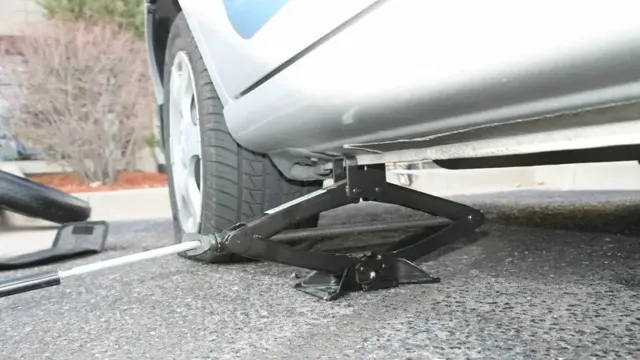
Why Use a Torque Wrench?
If you’re a car mechanic or DIY enthusiast, you’ve undoubtedly heard of a torque wrench. But what is a torque wrench, and why is it important? A torque wrench is a specialized tool used to tighten bolts and nuts to a precise level of torque. This is critical because tightening bolts too much or too little can result in safety issues, damage to parts, or even the complete failure of a system.
Think of it like tightening a jar lid – if you don’t spin it tight enough, it will still come loose, and if you tighten it too much, it might break. A torque wrench helps you find that perfect sweet spot. Using a torque wrench isn’t just important for safety and reliability – it’s also a sign of professionalism and attention to detail.
So, if you’re serious about working on cars or machines, investing in a good torque wrench is a must.
Types of Torque Wrenches
When it comes to tightening bolts and nuts, torque wrenches are an essential tool for professionals and DIY enthusiasts alike. Different types of torque wrenches are available in the market to cater to unique needs. Click torque wrenches are the most commonly used type, featuring an audible clicking sound to indicate that the desired torque value has been reached.
Dial torque wrenches, on the other hand, feature a dial indicator that displays the applied torque value. Beam torque wrenches use a simple lever and flexing beam to indicate the applied torque value. Digital torque wrenches provide a digital readout of the applied torque value, making them ideal for precision work.
Finally, hydraulic torque wrenches are ideal for heavy-duty applications where high levels of torque are required. By understanding the different types of torque wrenches and their features, users can select the right tool for the job at hand, ensuring safety, precision, and efficiency in all their projects.
How Torque Wrenches Work
Torque wrenches are tools commonly used in automotive and mechanical repair applications to tighten bolts and nuts to a specific torque value. Understanding how torque wrenches work is essential in achieving the desired level of precision in tightening fasteners. A torque wrench operates by applying a specific amount of torque force to a fastener, which results in achieving the optimal tension without over-tightening or under-tightening.
This level of precision in tightening ensures that the fastener remains secure and prevents damage to the equipment or material being fastened. Torque wrenches are also designed to make an audible click or a tactile signal when the desired torque setting has been reached, enabling the user to stop applying force and move on to the next fastener. It is important to note that torque wrenches come in various types, including beam-type, click-type, and digital torque wrenches.
Each type has its unique method of operation, but they all serve the same purpose of measuring and applying torque in a precise and accurate manner.
When to Use a Torque Wrench
If you’re wondering if you need a torque wrench to change a tire, the answer is yes. A torque wrench is a necessary tool when it comes to tightening lug nuts on your tires. While many people assume they can simply use their arm strength to tighten the lug nuts, this can lead to uneven tightening and ultimately result in a dangerous situation when driving.
A torque wrench ensures that each lug nut is tightened to the manufacturer’s recommended specification, which not only keeps you safe but also prolongs the life of your tires. So, next time you’re changing a tire, be sure to use a torque wrench to tighten those lug nuts and keep you and your passengers safe on the road.
When Torque Wrenches Are Needed
When it comes to tightening bolts, using a torque wrench is essential to ensure that the proper amount of force is applied. Torque wrenches are particularly useful in automotive or mechanical industries, where precise bolt tightening is crucial to safety and performance. They are also important in construction and maintenance work where safety is a top priority.
Torque wrenches can prevent over-tightening of bolts, which can lead to damage, or under-tightening, which can result in parts falling off or breaking down. Using a torque wrench can also help avoid the need for costly repairs due to improperly tightened bolts. It’s important to note that not all bolts require a torque wrench, but in situations where precision and safety are critical, using a torque wrench is highly recommended.
Benefits of Using a Torque Wrench
A torque wrench can be an incredibly useful tool in many situations where precision is crucial. The benefits of using a torque wrench include more accurate and consistent tightening of bolts and nuts, which can help prevent damage or failure. It’s especially important when working on critical components such as engine parts or suspension systems.
Knowing when to use a torque wrench is crucial, as overtightening can cause damage just as much as undertightening can lead to failure. Investing in a high-quality torque wrench can save you time and money in the long run, ensuring that your projects are completed correctly the first time. So, next time you’re tightening bolts, consider using a torque wrench to ensure that your work is precise and reliable.
Changing a Tire Without a Torque Wrench
So you’ve got a flat tire and you’re wondering if you need a torque wrench to change it. The short answer is no, you don’t technically need a torque wrench. But it’s important to understand why a torque wrench is often recommended for changing tires.
The torque wrench helps ensure that the lug nuts are tightened to the proper torque specification, which is typically around 80-100 ft-lbs. If the lug nuts are under-tightened, the tire could come loose while driving, which could be dangerous. On the other hand, over-tightening the lug nuts could lead to warped brake rotors or stripped threads on the wheel studs.
So while you can certainly change a tire without a torque wrench, it’s important to be careful and make sure the lug nuts are tightened to the proper torque specification. If you’re not comfortable doing this yourself, it’s always a good idea to take your car to a mechanic or tire shop to have the tire changed professionally.
Steps to Change a Tire
When you find yourself with a flat tire on the side of the road, changing it yourself can be a daunting task. It’s important to have some basic knowledge and the right tools to complete the job. One of these tools is a torque wrench, which helps ensure that the lug nuts are properly tightened.
However, if you don’t have one available, you can still change a tire safely. First, find a flat and level surface and put on your emergency brake. Then, use a tire iron to loosen the lug nuts before jacking up the car with a jack stand.
Remove the flat tire and replace it with the spare, making sure the valve is facing outwards. Hand tighten the lug nuts and lower the car before tightening them further with the tire iron. To ensure that the lug nuts are tight enough, do it in a star pattern and use your body weight to tighten until they are snug.
Although it’s always recommended to use a torque wrench, you can still change a tire without one by using proper technique.
Tips for Changing a Tire without a Torque Wrench
Changing a tire without a torque wrench can seem daunting, but with the right tools and approach, it’s doable. First, make sure you have a lug wrench, jack, and spare tire. Begin by loosening the lug nuts with the lug wrench, without completely removing them.
Next, use the jack to lift the car until the tire is off the ground. Once elevated, take off the lug nuts and remove the tire. Before putting the spare tire on, check that it is inflated to the recommended pressure.
Then, align the holes in the spare with the wheel bolts, and hand-tighten the lug nuts. Lower the car to the ground and then tighten the lug nuts as much as possible using the lug wrench, in a diagonal pattern. Don’t overtighten, but make sure they are secure enough for driving.
And finally, when you get home, bring your car to your local mechanic to check the tire pressure and tightness of the lug nuts. By following these steps, you can change a tire without a torque wrench. So don’t panic if you don’t have one on hand, just be safe and take your time.
Conclusion
In conclusion, do you need a torque wrench to change a tire? It all depends on how much you trust your own strength and guessing abilities. Sure, you could go at it with a regular wrench and hope for the best, but why take that risk when you can have the peace of mind and precision that comes with a torque wrench? Think of it like trying to hit a bullseye in darts blindfolded versus actually being able to see the target – it’s all about accuracy and reducing the chances of something going wrong. So, if you want to ensure a smooth and safe tire change, invest in a torque wrench and never second-guess your abilities again.
Your car (and your fingers) will thank you.”
FAQs
What is a torque wrench?
A torque wrench is a tool used to measure and apply a specific amount of torque to a bolt or nut.
Why do I need a torque wrench to change a tire?
Using a torque wrench ensures that the lug nuts are tightened to the manufacturer’s recommended specification, which helps prevent wheel vibration and wheel detachment.
What happens if I don’t use a torque wrench when changing a tire?
If the lug nuts are over-tightened, it can damage the wheel stud or cause the wheel to warp. If they are under-tightened, the wheel can vibrate or even come loose while driving.
Can I use a regular wrench to tighten lug nuts?
While a regular wrench can be used, it does not provide the same level of precision in tightening the lug nuts to the correct torque specification.
How do I know the torque specification for my tire’s lug nuts?
The torque specification can be found in the vehicle’s owner’s manual or on the tire manufacturer’s website.
Can I reuse old lug nuts when changing a tire?
It is not recommended to reuse old lug nuts. It is best to use new ones to ensure proper torque and prevent the risk of failure.
Is it necessary to check the torque on lug nuts after driving for a while?
It is recommended to recheck the torque on lug nuts after driving 50-100 miles to ensure they have not loosened.

